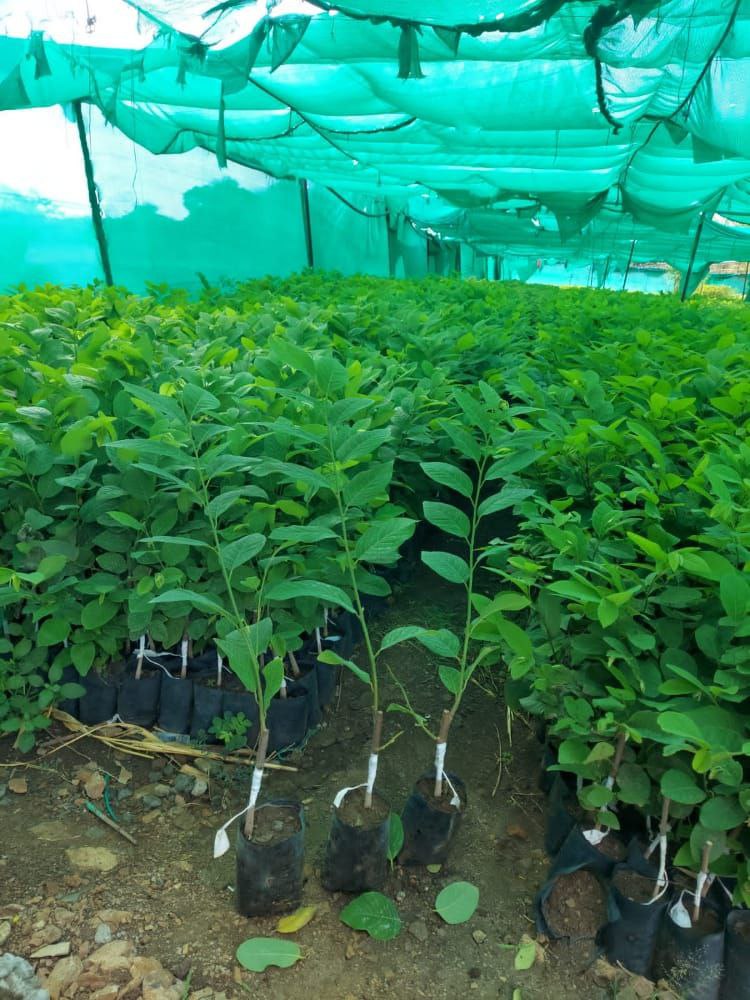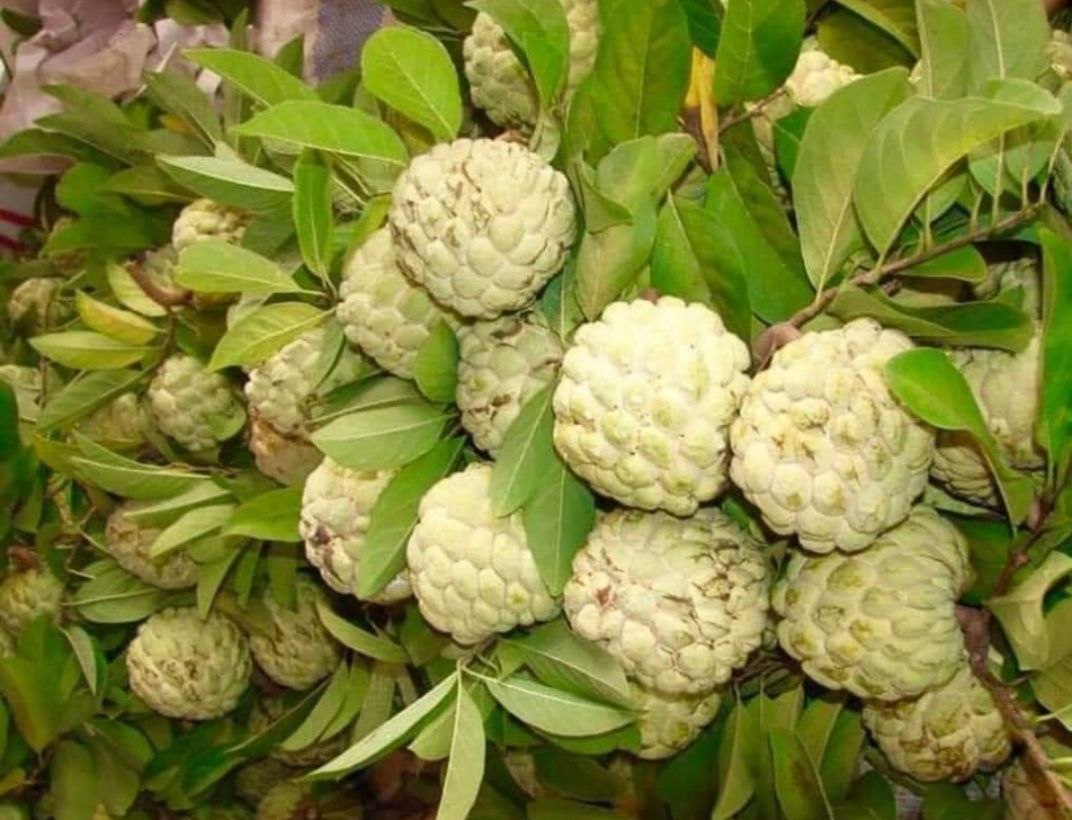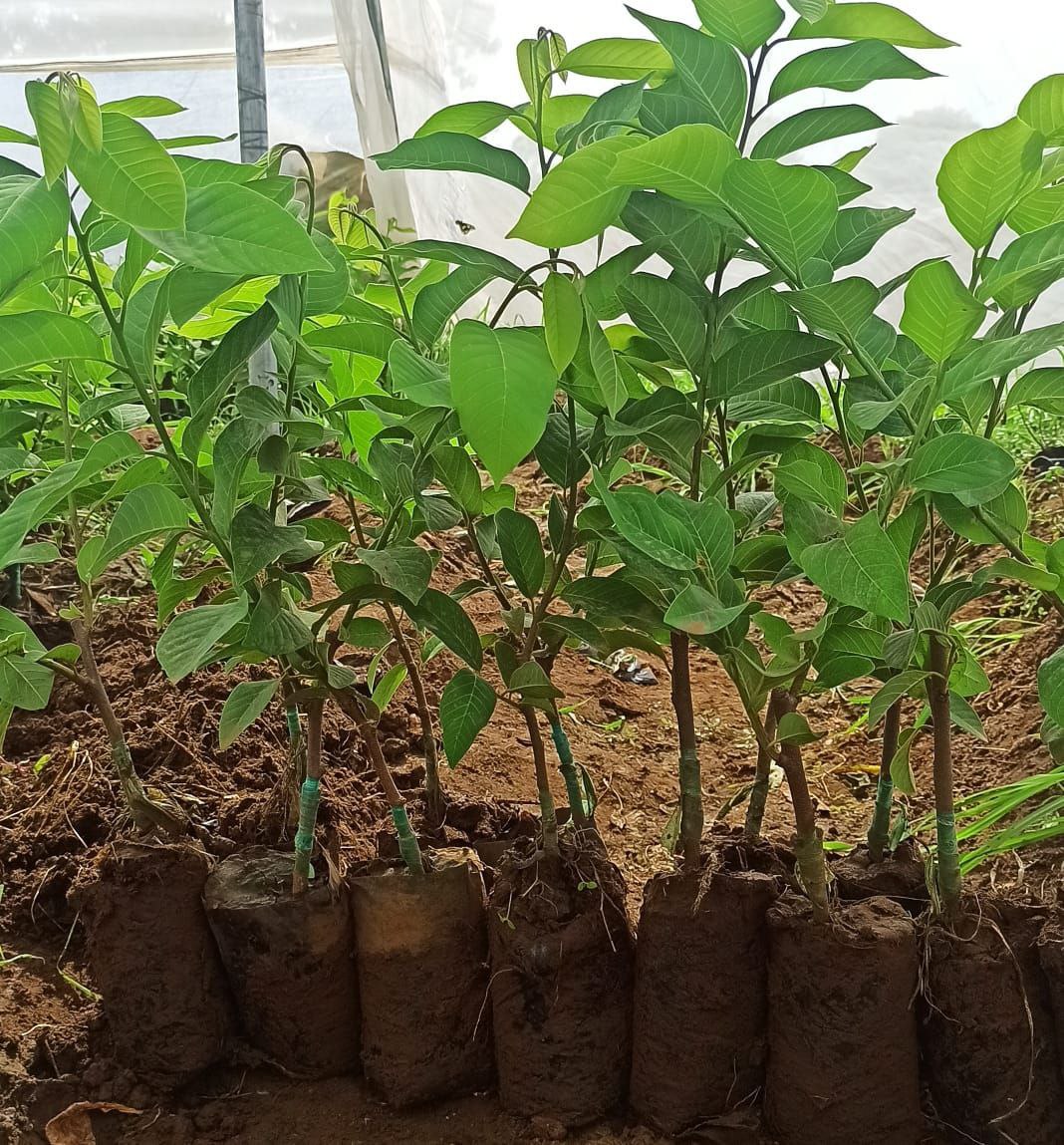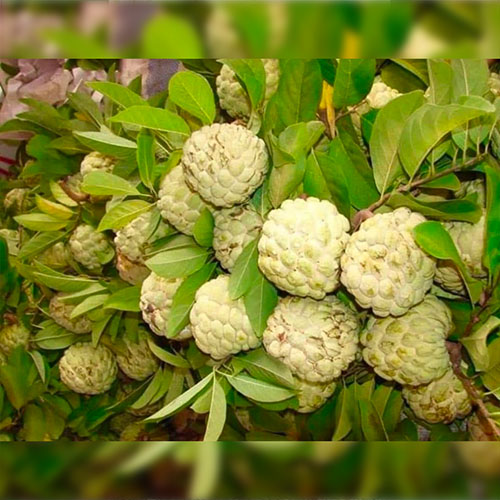Balanager Custard Apple Plants
The Balanagar Custard Apple (sometimes spelled "Balanager") is a popular variety of custard apple (Annona squamosa), known for its sweet, creamy fruits with a relatively higher flesh-to-seed ratio. This variety is particularly prized for its superior fruit quality, ease of cultivation, and adaptability to different growing conditions.
Key Characteristics of Balanagar Custard Apple Plants
-
Fruit Appearance:
- Balanagar custard apples are generally medium to large in size, with fruits often weighing between 200 to 500 grams (7 to 18 ounces).
- The fruits have a characteristic conical or heart-shaped form with a knobby, green skin that may develop a slightly yellowish or bluish tint as they ripen.
- The skin is thicker compared to some other varieties, which helps protect the fruit during handling and transportation.
-
Flavor and Nutritional Value:
- The flesh of the Balanagar custard apple is creamy, sweet, and fragrant, with a pleasant custard-like texture. It has fewer seeds compared to other varieties, making it more desirable for fresh consumption.
- Like other custard apples, Balanagar is rich in vitamin C, potassium, dietary fiber, and antioxidants, which are beneficial for boosting immunity, supporting digestive health, and providing overall nutrition.
-
Tree Size and Growth Habits:
- Balanagar custard apple trees are medium-sized, typically growing 4 to 6 meters (13 to 20 feet) tall. They have a rounded, spreading canopy that provides good shade and is ideal for small to medium-sized gardens or orchards.
- The trees have a well-branched structure with slender branches and glossy green, elliptical leaves.
-
Flowers and Fruiting:
- The tree produces greenish-yellow, fragrant flowers that are generally solitary or occur in clusters. Flowering typically begins in the spring.
- The fruits mature about 3 to 4 months after flowering and are usually ready for harvest in the late summer to early autumn.
Growing Balanagar Custard Apple Plants
-
Climate Requirements:
- Balanagar custard apple plants thrive in tropical and subtropical climates. They prefer warm conditions with temperatures ranging from 20°C to 35°C (68°F to 95°F) and are sensitive to frost.
- These trees require a dry season for optimal flowering and fruiting, with some irrigation needed during prolonged dry spells to support growth and fruit development.
-
Soil Preferences:
- The plants grow best in well-drained sandy loam or loamy soils with a slightly acidic to neutral pH range of 6.0 to 7.5.
- Although they can tolerate various soil types, good drainage is crucial to prevent waterlogging and root rot, especially in regions with heavy rainfall.
-
Sunlight:
- Full sunlight is essential for the healthy growth and fruiting of Balanagar custard apple trees. Ensure they receive at least 6 to 8 hours of direct sunlight each day.
- Plant them in open areas where they are not shaded by larger trees or structures to maximize sunlight exposure.
-
Watering:
- Young Balanagar custard apple plants need regular watering to establish a strong root system. Keep the soil consistently moist but avoid waterlogging.
- Mature trees are relatively drought-tolerant but benefit from regular watering during dry periods to enhance fruit quality and yield.
-
Fertilization:
- Apply a balanced fertilizer (such as NPK 10-10-10) during the growing season to promote healthy foliage growth and fruit development.
- Incorporate organic compost or well-rotted manure annually to improve soil fertility and structure, supporting sustained tree health and productivity.
-
Pruning and Maintenance:
- Pruning is essential to maintain the tree’s shape, improve air circulation, and allow sunlight to penetrate the canopy. Prune the trees after harvesting to remove dead or diseased branches and encourage new growth.
- Regular pruning also helps control the tree’s size, making harvesting easier and reducing the risk of branches breaking under the weight of the fruit.
-
Pest and Disease Management:
- Common pests that may affect Balanagar custard apple plants include mealybugs, aphids, and fruit borers. Use integrated pest management (IPM) techniques such as natural predators, neem oil, or insecticidal soaps to manage pest populations.
- Diseases such as anthracnose, leaf spot, and powdery mildew can occur, especially in humid conditions. Ensure good air circulation, avoid overhead watering, and apply fungicides if necessary to control these issues.
Propagation
- Seeds: Balanagar custard apple plants can be propagated from seeds, but this method may result in variability in fruit quality and yield. Seedlings take longer to bear fruit (typically 3-4 years) and may not retain the parent tree's desirable traits.
- Grafting: Grafting is the preferred method for propagating Balanagar custard apple plants, as it ensures the new plants maintain the high-quality fruit characteristics and improved disease resistance of the parent tree. Grafted trees typically begin bearing fruit within 2 to 3 years.
Care Tips
- Mulching: Apply mulch around the base of the tree to conserve soil moisture, regulate soil temperature, and suppress weeds. Organic mulch, such as straw or wood chips, also improves soil fertility as it decomposes.
- Spacing: Plant Balanagar custard apple trees at least 15 to 20 feet apart to provide adequate space for growth and ensure good air circulation, which helps prevent diseases.
- Harvesting: Harvest custard apples when they are fully mature and slightly soft to the touch. Ripe fruits should have a greenish hue with a slight yellow tint and give slightly when pressed. Handle the fruits carefully during harvesting to avoid bruising, which can affect their shelf life and quality.
Benefits of Growing Balanagar Custard Apple Plants
- Superior Fruit Quality: Balanagar custard apples are known for their sweet, creamy flavor and higher flesh-to-seed ratio, making them a favorite for fresh consumption and culinary use.
- Nutritional Value: The fruits are rich in vitamins, minerals, and antioxidants, offering various health benefits, including improved immunity, digestion, and cardiovascular health.
- Adaptability: Balanagar custard apple plants are adaptable to a range of soil types and climatic conditions, making them suitable for various regions within tropical and subtropical zones.
- Ornamental Value: The trees have an attractive appearance with glossy leaves and fragrant flowers, adding aesthetic value to gardens and landscapes.
By following these guidelines and providing proper care, you can successfully grow Balanagar custard apple plants and enjoy their delicious fruits and the numerous health benefits they offer.



.png)


